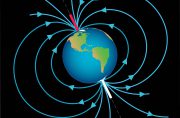תרפיית כאב לפגועי עמוד השדרה
Magnetic therapy may help people with spinal cord injuries.
Doctors at Imperial College London administered magnetic stimulation to the brains of people with partial damage to their spinal cord.
The therapy led to improved muscle and limb movement, and increased ability to feel sensations.
Details of the technique – known as repetitive transcranial magnetic stimulation (rTMS) – are published in the journal Spinal Cord.
It works by using an electromagnet placed on the scalp to generate brief magnetic pulses, about the strength of an MRI scan.
These pulses stimulate the part of the brain called the cerebral cortex.
The technique was tested on four patients with what are known as incomplete spinal cord injuries.
This is where the spinal cord has not been entirely severed, but the patient has still lost the ability to move or feel properly below the injury point.
Brain signals
Researcher Dr Nick Davey said: "Through rTMS we may be able to help people who have suffered partial injuries to the spinal cord recover some of their movement and feeling.
"We think it works by strengthening the information leaving the brain through the undamaged neurons in the spinal cord. It may work like physiotherapy but instead of repeating a physical task, the machine activates the surviving nerves to strengthen their connections."
The patients had all sustained their injuries at least 18 months previously and had already received conventional rehabilitation including physiotherapy.
They were all considered stable in that they were no longer undergoing natural improvement.
The patients received both real and sham rTMS treatment over a three-week period.
The rTMS treatment involved five consecutive days of magnetic stimulation for one hour per day.
The researchers focused on a phenomenon called intracortical inhibition which makes it easier for mesage from the brain to pass down the spinal cord to the rest of the body.
They found rTMS treatment resulted in a 37.5% drop in intracortical inhibition, compared with normal physiotherapy.
This reduction in intracortical inhibition was accompanied by improvement in both motor and sensory function, which lasted for at least three weeks after the treatment.
Dr Davey said: "Despite this, we still need to be extremely careful in interpreting these results as we only sampled a small number of patients.
"Further studies on larger groups of patients will need to be carried out before we will know if this treatment is fully effective.
"Similarly we have no idea how long the treatment benefits will last over a longer period."
The treatment was originally designed to treat psychiatric disorders, and has been used in treating some of the symptoms of schizophrenia.



